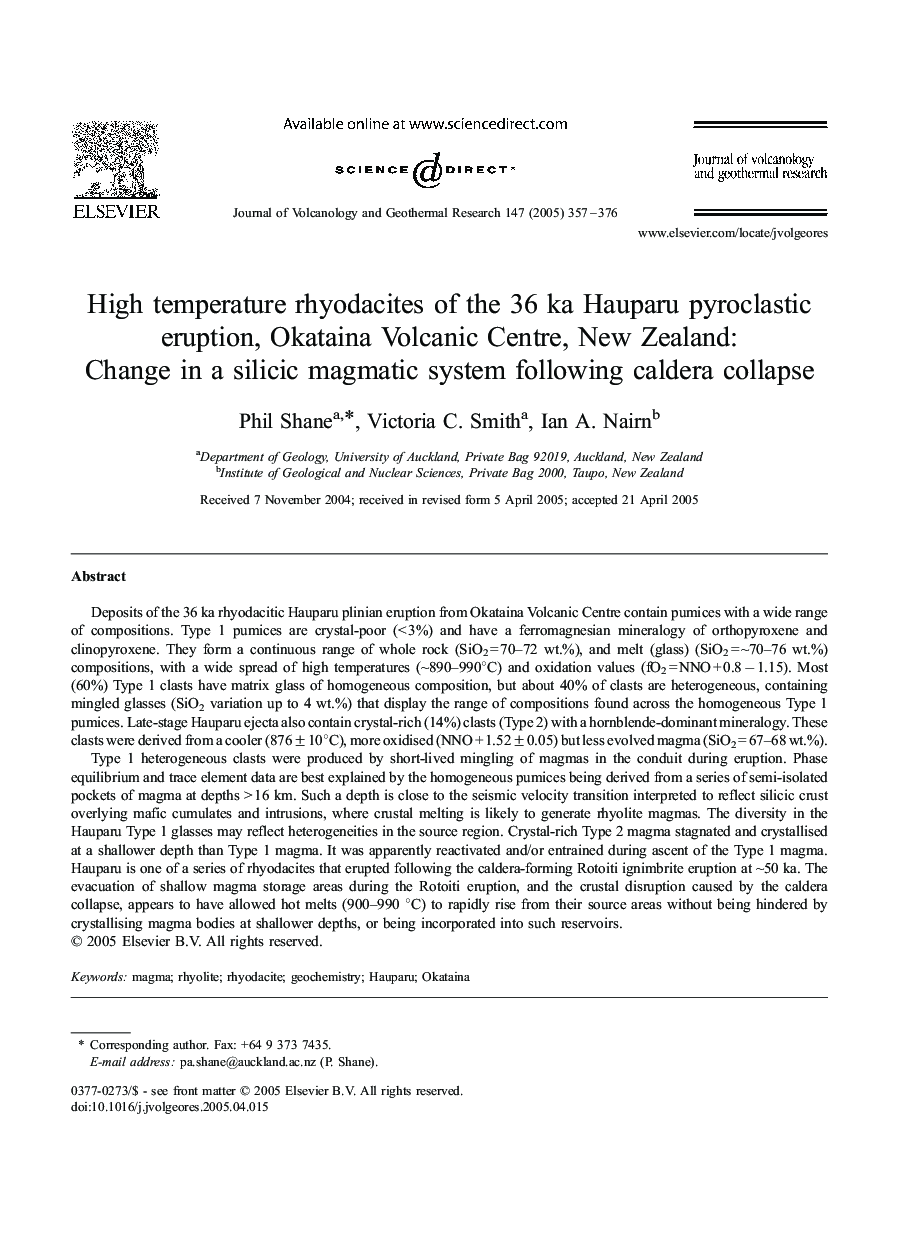| Article ID | Journal | Published Year | Pages | File Type |
|---|---|---|---|---|
| 9531068 | Journal of Volcanology and Geothermal Research | 2005 | 20 Pages |
Abstract
Type 1 heterogeneous clasts were produced by short-lived mingling of magmas in the conduit during eruption. Phase equilibrium and trace element data are best explained by the homogeneous pumices being derived from a series of semi-isolated pockets of magma at depths > 16 km. Such a depth is close to the seismic velocity transition interpreted to reflect silicic crust overlying mafic cumulates and intrusions, where crustal melting is likely to generate rhyolite magmas. The diversity in the Hauparu Type 1 glasses may reflect heterogeneities in the source region. Crystal-rich Type 2 magma stagnated and crystallised at a shallower depth than Type 1 magma. It was apparently reactivated and/or entrained during ascent of the Type 1 magma. Hauparu is one of a series of rhyodacites that erupted following the caldera-forming Rotoiti ignimbrite eruption at â¼50 ka. The evacuation of shallow magma storage areas during the Rotoiti eruption, and the crustal disruption caused by the caldera collapse, appears to have allowed hot melts (900-990 °C) to rapidly rise from their source areas without being hindered by crystallising magma bodies at shallower depths, or being incorporated into such reservoirs.
Keywords
Related Topics
Physical Sciences and Engineering
Earth and Planetary Sciences
Geochemistry and Petrology
Authors
Phil Shane, Victoria C. Smith, Ian A. Nairn,
